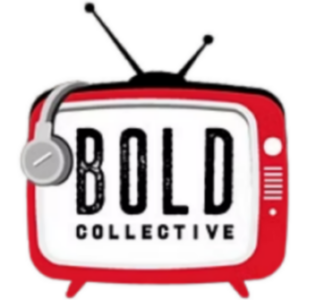Introducing the Podcast Industry Glossary, a collaborative effort between Sounds Profitable partners.
This glossary serves as a comprehensive resource for key terms and terminology used in the podcast industry. It is a working document that will be regularly updated to ensure its relevance. For a Spanish version of the glossary, produced be Genuina Media, click here.
(Updated August 2023)
We encourage public participation in order to make the glossary more inclusive and representative. Please contact us if you have any suggested edits or new additions.
To help you navigate, terms are in alphabetical order and segmented by category. Use the links below to jump directly to the category you’re interested in:
Buying/Selling
Term: Actuals
Definition: The number of impressions that have run for an ad campaign.
Term: Advertiser
Definition: The company paying for their ad campaign to be run, directly or through working with an agency. Also know as a sponsor or buyer.
Term: Affiliate Marketing
Definition: A percent of revenue or flat rate commission from any sale generated by and attributed to the ad campaign.
Term: Audience Targeting
Definition: The ability to target ads based on the advertisers existing or prospective customers. This requires an adserver which can access the advertisers first-party data.
Term: Back Catalogue
Definition: Podcast episodes released more than 30/60/90 days ago.
Term: Behavioral Targeting
Definition: The ability to target your audience based on a user’s online and offline behavior from first or third party data sets (e.g. parents shopping for baby goods, connected home users, auto enthusiasts, etc).
Term: Blackout
Definition: Inventory unavailable for purchase, either due to no episodes being released, or due to booked campaigns.
Term: Brand Awareness Marketing
Definition: A type of marketing strategy where the goal is to generate awareness of the brand, its products or services, to aid with recall and positive sentiment long-term.
Term: Brand Safety
Definition: The contextualization of content that ad campaigns will be run on with the intention of minimizing negative impact to the brand or advertiser by avoiding association with negative or inappropriate content.
Term: Brand Suitability
Definition: The contextualization of content that ad campaigns will be run on with the intention of maximizing the positive association between the brand or advertiser and the specific content or publisher.
Term: Branded Podcast
Definition: A podcast created by or on behalf of a company or specific brand to promote its products or services, strengthen it’s brand narrative, and/or spread its key messaging.
Term: Cancellation Clause
Definition: Agreed upon time frame between podcasts and advertisers in which either party can cancel the remainder of the contract.
Term: Category Exclusivity
Definition: Exclusivity from other brands in the same IAB content category, across the entire podcast or within a specific episode for the duration of the campaign and optionally a period of time after it ends.
Term: Category Targeting
Definition: The ability to target ads to a specific audience based on the category of content they’re consuming, defined by the podcast genres or the IAB Content Taxonomy.
Term: Contextual Targeting
Definition: The ability to target a campaign to run only when the title, show description, episode description, or actually transcribed content of the episode are a match. This can be simplified keyword targeting or more complex solutions that assign topics to the content or segments of the content.
Term: Cost per Mille (CPM)
Definition: The price an advertiser pays per every 1,000 impressions their ad receives.
Term: Date/Time Targeting
Definition: The ability to target advertising to be run at a specific date and/or time.
Term: Demand
Definition: The buyer of advertising inventory.
Term: Demographic Targeting
Definition: The ability to target advertising to specific characteristics of the listener, including but not limited to: age, gender, race/ethnicity, income, and education.
Term: Direct Response Marketing (DR)
Definition: A type of marketing strategy that asks consumers to respond immediately to the advertisement, typically by taking a specific action that can be attributed to the ad campaign to judge performance.
Term: Direct Sales
Definition: The sale of ad inventory directly from the publisher or entity with full right of sale, to the advertiser or their agency, with no additional third party involvement.
Term: Episodic Buying
Definition: Buying a set volume of ad impressions in a specific episode or episodes.
Term: Geographical Targeting
Definition: The ability to target advertising by geographical identifiers such as zip code, DMA, country, state, region, and country.
Term: Gross Revenue
Definition: Total revenue from the sale of ad inventory to the buyer, before any fees or commissions are removed.
Term: Insertion Order
Definition: A signed agreement between the seller and buyer which includes all campaign parameters, obligations, and financial terms.
Term: Makegood
Definition: Compensation, monetarily or through additional inventory, for a purchased ad that failed to meet the contractual requirements agreed upon in the IO. A makegood can apply to one ad spot or and entire campaign, depending on the severity of the issue.
Term: Negative Targeting
Definition:The ability to avoid running advertising on any single or combined targeting option available.
Term: Net Revenue
Definition: The final dollar amount after fees and commisions from the sale of adventory, paid to the publisher.
Term: Private Marketplace
Definition: A customizable, invitation-only marketplace where publishers make their inventory and audience available to select buyers programmatically. This biddable inventory is transacted through private auctions.
Term: Programmatic Advertising
Definition: An operationalized method of buying and selling ad inventory through the use of Supply Side Platforms (SSPs) and Demand Side Platforms (DSPs) allowing for real-time bidding on the inventory. The pre-neogitated nature of programmatic advertising creates opperational efficiencies in ad serving, ad targeting, sales, billing, and more.
Term: Programmatic Guaranteed (PG)
Definition: A type of programmatic advertising that allows buyers to purchase a guaranteed number of impressions at a pre-negotiated rate from a publisher.
Term: Rate Card
Definition: A document for one or more podcasts that lists the individual podcast details such as links, show information, host information, audience demographics, advertising rates (CPM and Sponsorship), category exclusivity, cancellation terms, and previous advertisers.
Term: Request for Proposal (RFP)
Definition: The solicitation of proposals from ad inventory representation or adtech vendors for buyers and publishers to vet the right solution for their needs.
Term: Run of Network (RON)
Definition: A type of targeting where an ad can run on any show within a network.
Term: Run of Show (ROS)
Definition: A type of targeting where an ad could run on any episode for a specific show, old or new, that is listened to in the timeframe of the campaign. Sometimes called Full Catalogue.
Term: Sponsorship
Definition: Advertising focused on the building of a strong association between the brand and podcast or publisher, often exceeding the scope of a more defined ad campaign.
Term: Spot Buying
Definition: Buying 100% share of voice (SOV) for a specific ad position in a specific episode either indefinitely or for a set period of time after the episode has launched.
Term: Supply
Definition: Ad inventory made available for purchase by agencies and advertisers.
Term: Supply Side Platform (SSP)
Definition: A programmatic advertising platform that allows publishers to coordinate the supply, monetization, and distribution of their advertising inventory to and from advertisers. Supply-side platforms connect advertising networks and exchanges to demand-side platforms (DSP) on the advertiser side.
Term: Upfronts
Definition: Negotiations that occur between advertisers/agencies and podcasters/networks in late Q3/early Q4 to determine yearly pricing for annual deals for the following year.
Creative
Term: Ad Creative
Definition: The audio content of an advertisment that is delivered to the listener. Ad Creative can also pertain to promotional announcements and bumpers.
Term: Bumper Music/Jingles
Definition: Short 5-15 second pieces of music played in-between segments, sometimes providing a transition point.
Term: Call to Action (CTA)
Definition: An action requested of the listener during the ad creative, generally relating to the goals of the advertiser (eg. visit this URL, use this promo code, subscribe to this podcast, etc).
Term: Creative Brief
Definition: Typically 1-2 pages of talking points that the advertiser provides to the seller to give the voice talent (typically the host) an idea of what they are or are not allowed to say. Creative briefs often include requirements such as an opening line, call to action (CTA), and open ended talking points to choose from.
Term: Endorsed Read
Definition: Ad creative created by the host of the podcast, sharing their positive personal experience and endorsement with the product or company, and recommending it to their listeners.
Term: Host Read
Definition: Ad creative voiced by the host of the podcast.
Term: Live Read
Definition: Ad creative recorded live during and as a part of the specific podcast episode being sponsored. Often interwoven seamlessly into the content.
Term: Loudness
Definition: Loudness Units relative to Full Scale (LUFS) is a measure of perceived loudness (volume). In the podcasting industry, various companies have defined specific loudness levels for audio production (e.g., Apple recommends -16 LUFS, while Spotify suggests -14 LUFS). Adhering to these levels ensures that the audio content remains consistent across their platforms, preventing listeners from continuously adjusting the volume when switching from one show to another.
Term: Pre-Produced Read
Definition: Ad creative produced and supplied by the buyer, not utilizing podcast host or producer talent.
Term: Producer Read
Definition: Ad creative recored by the producer of the podcast.
Term: Scripted Read
Definition: Ad creative that is read verbatim from a script.
Term: Segment
Definition: A portion of the episodes content centered around one theme.
Term: Un-Scripted Read
Definition: Ad creative that typically utilizes talking points instead of a script, so that the read comes off more authentic.
Term: Voice Talent
Definition: A paid voice actor who records ads for a fee.
Reporting
Term: Ad Impression
Definition: A metric used to quantify the total number of engagements with an advertisement. In podcasting, our engagement metric is Ad Delivered, indicating when the portion of the episode containing the advertisement has been sent to the listener in an IAB certified download.
Term: Aircheck
Definition: A recording with timestamp and transcript showcasing the proof of execution of an ad read.
Term: Attribution
Definition: The process of determining which audio ads are responsible for driving desired outcomes, such as website visits, app downloads, or sales. This is done by tracking the listener journey from the point of exposure to the ad to the point of conversion.
Term: Attribution Pixel
Definition: A tracking pixel used to identify the consumer exposed to an ad and match them to a tracked action on a website, app, or other endpoints.
Term: Automatic Download
Definition: Specific podcast players allow listeners to follow a podcast so that when a new episode is released, regardless of listener interaction, the episode is downloaded by the podcast player in the background.
Term: Cost per Acquisition (CPA)
Definition: The price the buyer pays the seller for every defined acquisition or conversion that can be attributed to the ad campaign.
Term: Customer Acquisition Cost (CAC)
Definition: The total cost of all marketing efforts required for the advertising company to acquire one new customer. May include all used channels, but can be broken down per channel (e.g. CAC attributed to podcast advertising).
Term: Device User Agent
Definition: A string of characters that identifies the listeners device hardware, operating system and version, and the podcast player or web browser that they’re using to request podcasts. This data is passed from the podcast player to the hosting platform when requesting an episode to download.
Term: Download
Definition: A term governed by the IAB Podcast Measurement Technical Guidelines that is counted once per episode, per unique IP address and device user agent combination, in a 24-hour period when 60 seconds or more of the audio file for a podcast episode has been sent from the hosting platform to the listeners device.
Term: Fill Rate
Definition: The percentage of total ad inventory that has been delivered by an ad.
Term: Impression Pixel
Definition: An analytics and tracking pixel executed by the ad server when the portion of the episode containing the ad this pixel is associated with has been sent to the listeners device in an IAB certified download. This can be used for third-party measurement or attribution.
Term: Inventory Forecasting
Definition: An estimation of total ad inventory encompassing expected growth over a set period of time through the use of historical data.
Term: IP Address
Definition: A unique digital address that identifies a device or network. In podcasting, IP address is primarily identified by household Wi-Fi, cellular connections, or business Wi-Fi networks. This data is passed from the podcast player to the hosting platform when requesting an episode to download.
Term: Listens
Definition: A statistic unique to podcast players meant to represent the action of the listener consuming a podcast. There is not a standard for this statistic within the IAB guidelines and no two podcast players define a listen the same, nor do all podcast players provide this statistic. It is intended to represent actual listening behavior as recorded by the podcasts players.
Term: Manual Download
Definition: When a listener selects the download option in their podcast player to save that episode to their device.
Term: Prefix URL
Definition: An analytics URL optionally applied by the publisher through their hosting platform to provide third-party analytics for a podcast. Whenever a listener progressively, automatically, or manually downloads a podcast, the prefix URL is called first before redirecting to the audio file for every episode requested in that podcast.
Term: Progressive Download
Definition: When a listener presses play on a specific podcast episode, the podcast player requests the full file or chunks of the episode at a time from the hosting platform, while allowing the listener to play the episode. The downloaded files is stored in a temporary location rather than in a library as a downloaded podcast. Often confused with Streaming.
Term: Promo Code
Definition: A unique code to be used at checkout to give listeners access to a special offer and help track campaign success.
Term: Reach
Definition: The number of unique listeners over a period of time. Can be applied to a specific podcast, network, or ad campaign.
Term: Return on Ad Spend (ROAS)
Definition: The amount of revenue generated by a specific ad campaign relative to the cost of purchasing media to run it.
Term: Return on Investment (ROI)
Definition: The amount of revenue generated by the advertiser overall or for an entire media channel relative to the cost of purchasing media and running it.
Term: Revenue per Mille (RPM)
Definition: A publisher metric focused on the total revenue generated per 1,000 downloads, encompassing the cost per mille (CPM) of all ads delivered in that download.
Term: Share of Voice (SOV)
Definition: The percentage of impressions one advertiser receives measured against the total impressions within a specific ad position or an entire episode. If an episode supports up to four ads total and a buyer purchases one position fully, they would have 25% share of voice (SOV) of the entire episode but 100% SOV of that ad position.
Term: Vanity URL
Definition: A podcast specific URL that the host will use in their call to action (CTA) to drive listeners to an advertisers site. The brand will be able to track the number of listeners that come to their site through the URL and their subsequent actions, like purchasing or subscribing.
Ad Serving
Term: Ad Delivered
Definition: The number of times an ad was delivered to listeners, counted if all bytes of the ad creative have been sent to the listeners device in an IAB certified download.
Term: Ad Exchange
Definition: An open electronic marketplace for the buying and selling of ads. Buyers have access to bid on impressions based on their value to them directly through the exchange itself or through their DSP, while sellers maximize the yield of their inventory by enabling the highest-paying advertiser to buy a given impression. Also know as an Ad Marketplace.
Term: Ad Insertion Point
Definition: The specific timestamp within an episode of a podcast where one or more ads can be run. Broken down by pre-roll, mid-roll, and post-roll.
Term: Ad Network
Definition: A company that is given the rights to aggregate ad inventory from multiple publishers and sell it on their behalf.
Term: Ad Position
Definition: The pre-determined number of ad spots available for targeting within an Ad Insertion Point. When targeting an Ad Insertion Point with multiple ad positions available, publishers can prioritize which ads will serve based on various criteria setup within an Ad Server.
Term: Ad Server
Definition: A software platform that manages and delivers audio ads, used by both publishers and advertisers.
Term: Available Inventory
Definition: The amount of unreserved inventory available for purchase.
Term: Bid Request
Definition: The supply side platform’s (SSPs) request that includes all available information about the download, listener, and specific ad position to allow for the demand side platforms (DSPs) to compete for the inventory.
Term: Bid Response
Definition: The demand side platform’s (DSPs) response to the bid request from the supply side platform (SSP) which will be evaluated in real-time to determine which response will win the auction for the specific ad position.
Term: Billboard Ad
Definition: A short 10-15-second ad, closer to a mention than a full ad.
Term: Campaign
Definition: A set of ad creatives from one brand or company with defined targeting and goals.
Term: Competitive Separation
Definition: The separation of brands and/or companies within a specific podcast episode.
Term: Deal ID
Definition: A unique identifier generated in a supply side platform (SSP) for sellers to provide buyers negotiated programmatic access to their inventory either for a programmatic guarantee or a private marketplace.
Term: Demand Side Platform (DSP)
Definition: A programmatic advertising buying platform that allows advertisers and media buying agencies to bid automatically and in real-time on audio, display, video, mobile, etc.
Term: Dynamic Ad Insertion (DAI)
Definition: The ability for a podcast’s ad server to place the ideal ad creative for each ad position in real-time as the unique listener requests the episode for download. This server-side action takes into account the listeners information (IP address, device user agent, and specific episode) and the campaign goals and targeting.
Term: Embedded Ad
Definition: An ad that will be served through dynamic ad insertion (DAI) in a specific episode and a specific ad position for a determined amount of time at 100% share of voice (SOV) or agreed upon impression goal and then be removed. Sometimes referred to as Fake-In, a term the industry should collectively work to phase out.
Term: Feed Drop
Definition: A popular marketing tactic for podcasts to advertise their show on other podcasts to attract new listeners. Feed drops typically require a host-read introduction followed by a pre-recorded trailer, clip, or full episode supplied by the podcast being promoted. This audio file is then published as a new episode in the podcast promoting the show.
Term: Flight
Definition: The duration of a campaign. For dynamic insertion campaigns, the flight outlines when the ad will start and stop running. For baked-in campaigns, the flight will outline the drop date of each episode.
Term: Floor Price
Definition: A programmatic term for the lowest acceptable cost per mille (CPM) a seller is willing to accept from a buyer for their available inventory.
Term: Frequency
Definition: The number of times a listener can be served an advertisement or the number of times an advertisement was served during a flight.
Term: Frequency Capping
Definition: The ability to define the maximum number of times an ad can be delivered to a listener within a given timeframe.
Term: Integrated Ad
Definition: Ad creative that is part of the episode at time of upload to the hosting platform. Everyone who listens to an episode hears the exact same ad as there is no ad decisioning involved. Depending on the agreement, publishers may be allowed to edit the episode and re-upload it without the ad after a set period of time. Sometimes referred to as Bake-In, a term the industry should collectively work to phase out.
Term: Line Item
Definition: The advertising container that specifies the targeting for one or more ad creatives. Ad creatives are associated to line items, and campaigns contain one or more line items.
Term: Mid-roll Ad
Definition: An ad insertion point located within the body of the content, after the intro and before the outro.
Term: OpenRTB (Real-Time Bidding)
Definition: The open standard for real-time bidding (RTB) that allows publishers and advertisers to exchange ad inventory and bids programmatically.
Term: Pacing
Definition: The speed or rate at which an ad campaign or line item uses its set impressions or spends its budget during its flight. Pacing models can include ASAP, even, back/front loaded, and more.
Term: Pre-roll Ad
Definition: An ad insertion point that is placed within the first 10% of an episode, commonly before an episode begins.
Term: Post-roll Ad
Definition: An ad insertion point that is placed within the last 10% of an episode, commonly after the episode ends.
Term: Remnant Inventory
Definition: Unsold ad inventory, often offered at a discount but may offer less targeting opportunities.
Term: Supply Path Optimization (SPO)
Definition: A programmatic advertising strategy that enables demand side platforms (DSPs) to streamline and prioritize interaction with the most direct source of supply, whether publisher direct, supply side platform (SSP), or ad network.
Term: VAST URL
Definition: A URL used in place of an ad creative in an audio campaign to call a third party adserver either for a specific ad creative, a dynamic ad creative, or as a programmatic request. The VAST URL responds either with an audio file and all relevant tracking information or responds back with no ad available, allowing the publishers ad server to attempt to fill the ad position with another campaign.
Distribution
Term: Broadcast-To-Podcast
Definition: A way for over the air (OTA) and digital broadcasters to expand their audience to listeners who prefer an on-demand experience; the tech to generate/distribute podcast episodes automatically from linear streams.
Term: Cross-Promotion
Definition: The use of one podcast’s ad inventory to promote another podcast. Sometimes outlined as an exchange of impressions rather than a buy.
Term: Drop Date
Definition: The day an episode is published in an RSS feed and/or video platform. Also known as a publish or release date.
Term: Episode Description
Definition: A brief description of a specific podcast episode. Also known as Show Notes.
Term: Episode Release Frequency
Definition: The frequency in which a podcast uploads its episodes for distribution (i.e. weekly, 2x/week, monthly, etc).
Term: Geo-Distribution
Definition: Including or excluding where a show or ad is available, usually by country, state, region, city or DMA.
Term: GUID (Globally Unique Identifier)
Definition: A 128-bit unique number used to track an audio file. In advertising, this is used to pass information to advertisers and/or platforms including, but not limited to publisher, show, and episode.
Term: Hosting Platform
Definition: A software platform designed to store online podcast/episode details, podcast episode files, and to publish an RSS feed which allows podcast players to access all of this information for their listeners. Many hosting platforms have an integrated ad server for dynamic ad insertion as well.
Term: ID3 Tags
Definition: Metadata embedded in podcast episode files that provide information for the specific episode such as the title, description, author, episode length, podcast artwork, and more.
Term: Podcast-To-Broadcast
Definition: The process in which a publisher can curate and distribute one or more of their podcasts into a streaming radio format.
Term: RSS Feed
Definition: A public or private URL, provided by a podcast hosting platform, to a formatted text document which contains all required information and attributes for a podcast player to correctly display and access a specific podcast.
Term: Simulcast
Definition: A show airing on as both a podcast (RSS) and video (streaming, YouTube).
Term: Stream
Definition: A continuous flow of audio data transmitted over a network or CDN in real-time. Podcasting, through RSS, does not offer streaming in any capacity.
Industry
Term: Advertising Agency
Definition: A company that creates, plans and executes advertising campaigns on behalf of brands. Sometimes large brands have an ‘in-house’ agency that performs these same functions.
Term: Episode
Definition: A single recorded audio file that is usually part of a larger series
Term: Follower
Definition: Listeners of a podcast that would like their podcast player to notify them and/or automatically download newly released episodes of the podcast.
Term: IAB
Definition: Interactive Advertising Bureau is a global, non-profit trade organization representing the digital advertising industry focusing on creation of standards and education. The IAB governs the technical definitions of podcast terms and dictates certification and compliance policy with their methodology.
Term: IAB Category
Definition: A classification system used to define advertising and content categories.
Term: IAB Listener
Definition: A single user who downloads content for either immediate or delayed consumption, defined by the unique combination of IP address and device user agent, in line with IAB podcast guidelines. While some podcast players provide analytics portals that include “Listener” as a statistic, they are neither unified in their definition nor IAB certified.
Term: Podcast
Definition: An on demand audio-first form of content, primarily distributed through an RSS feed for listeners to consume through their podcast player of choice.
Term: Podcast Categories
Definition: A series of parent and child categories that a podcast publisher can self-select in their hosting platform to better allow their ideal audience to find them in a podcast player.
Term: Podcast Directory
Definition: A public or private repository of submitted RSS feeds that allow podcast players to access all listed podcasts.
Term: Podcast Player
Definition: An application or web player that listeners use to access podcast RSS feeds directly or through a directory to allow for the following and playing of podcasts. Examples include Apple Podcast, Spotify, Amazon Music, and Google Podcasts.
Term: Podcaster
Definition: The content creators and often the hosts of a podcast.
Term: Production Agency
Definition: An audio agency that creates podcast, advertisements, or provides production assistance. Also known as a Production House.
Term: Subscriber
Definition: A listener who chooses to pay for access to ad free, bonus, and/or early podcast content, directly through their podcast app or through services that generate a private RSS feed.
This project would not have been possible without the help of the following Sounds Profitable partners.
- Lisa Jacobs, SVP of Media Operations at Ad Results Media
- Dane Cardiel, VP of Creator Partnerships at Gumball
- Lauren O’Malley, Sr Media Buyer – Partnerships at Athletic Greens
- Thomas Mancusi, Head of Growth at QCODE
- Sharon Taylor, SVP Podcast Strategy & Product Operations at Triton Digital
- Mattia Verzella, Head of Business Development at Spreaker from iHeart
- Rebecca Dalby, Head of Marketing at Spreaker from iHeart
- Kavan Braun, Director of Podcasts at Backyard Ventures
- Grace Kane, Director of Business Development, Podcasts at Simplecast
- Douglas Bailey, Business Development Director at Evergreen Podcasts
- Toni Magyar, Director of Podcast Business Operations at Ten Percent Happier
- Colin Gray, Founder at Alitu
- Rockie Thomas, Chief Revenue Officer at SoundStack
- Scott Klass, Chief Marketing Officer at SoundStack
- Jim Ballas, Head of Publisher Partnerships at Magellan AI















































































































































































































